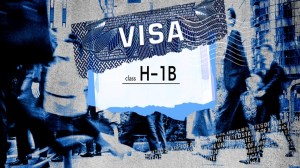By Lavi Lazarovits
As we HEAD into a new decade, there’s no doubt that attackers will try to use innovation against us but determining where they will focus is always a challenge. Here are the top security trends that will impact both businesses and consumers in 2020:
Drones open up new pathway for intelligence gathering
To date, the security concern around drones has mostly been focused on the physical damage that could be perpetrated by nefarious actors, including nation states. In 2020 we could start seeing attackers focus more on what drones know and how that information can be exploited for intelligence gathering, corporate espionage and more. While it’s true that drones have the potential to do physical damage, the longer-term opportunity for attackers is to use drones as another pathway to steal – and manipulate – sensitive information.
Goldman Sachs recently predicted that businesses will spend more than $17 billion in the next five years on drone functionality. With an emphasis on innovation and development, these devices need to be treated as any other IoT device, with software that gathers and stores sensitive information that needs to be protected. Organisations need to consider who has the ability to control the drone’s activities, what information the drone is storing, how access to that information is being managed and monitored, and ultimately who owns responsibility for securing it.
The Butterfly effect of ransomware
Cities and public sector organisations around the world have faced a steady barrage of ransomware attacks, with momentum continuing to build heading into 2020. The constant bombardment will have a butterfly effect. Attackers keep looking for new ways to monetise their assaults. If they’ve got malware that is steadily performing in Windows environments, what’s the next target? Wanting access to a greater diversity of systems, including cloud environments and containers, we’ll begin to see innovation in ransomware that focuses more on Linux to take broader advantage of digital transformation trends.
Election security
Attackers have repeatedly demonstrated skill at causing disruption – when it comes to impacting democracy, we could see disruption come in many – even seemingly disconnected – forms. We’ve considered the impact of stalling major transportation systems—like buses and trains—in major metropolitan areas that could keep citizens from safely getting to the polls. A sequencing of these attacks that impact core infrastructure – halting transportation, shutting down the electrical grid or launching an attack on voter registration databases – can have a domino effect and impact the ability for the voting system to operate consistently with trust and reliability.
Biometrics creating a false sense of security in the enterprise
While it’s true that biometric authentication is more secure than traditional, key-based authentication methods, attackers typically aren’t after fingerprints, facial data or retinal scans. Today, they want the access that lies behind secure authentication methods. So, while biometric authentication is a very good way to authenticate a user to a device, organisations must be aware that every time that happens, that biometric data must be encrypted and the assets behind the authentication are secure. Even more importantly, the network authentication token that’s generated must be protected.
The writer is CyberArk Labs Team
Leader, CyberArk







